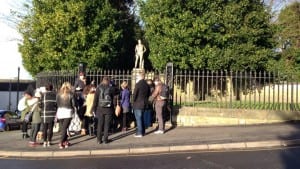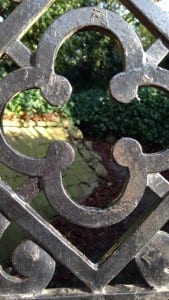Exploring all of Lincoln’s sites was admittedly very daunting as there were so many possibilities for places to perform. I particularly like the surroundings of the secret garden, which although were near a hotel to me, did not feel very tourist-y, in fact it felt quite private. The beauty of Lincoln is the history in its surroundings, the roman foundations within this site particularly stuck in my mind as they felt like a little bit of privacy in busy Lincoln
 Although I find this area very interesting, I think it is more of an obvious choice for performance and personally think given the opportunity to perform anywhere, I should grab this and choose somewhere a little off the beaten track. Depending on our theme for our performance, I think something behind bars could be very interesting both from an audience and actors point of view.
Although I find this area very interesting, I think it is more of an obvious choice for performance and personally think given the opportunity to perform anywhere, I should grab this and choose somewhere a little off the beaten track. Depending on our theme for our performance, I think something behind bars could be very interesting both from an audience and actors point of view.
I believe performing somewhere different from the beaten track would inspire our audiences members to explore more as they will see what can be found from deriving from the usual tourist areas, not just in Lincoln but everywhere. This links back to the reading from Between Routes and Roots where “contempory devisers have sought to develop performative practises that invite audiences to re-envision and re-imagine familiar places and recognise the multiplicity of meanings they carry”. (Govan et al, 2007, 138) This hopefully means we will inspire audience members of our final piece to take a different view on the places they see everyday.
Govan, E. Helen Nicholson and Katie Normington. (2007) Making a Performance: Devising Histories and Contemporary Practices. Routledge: Oxon.


